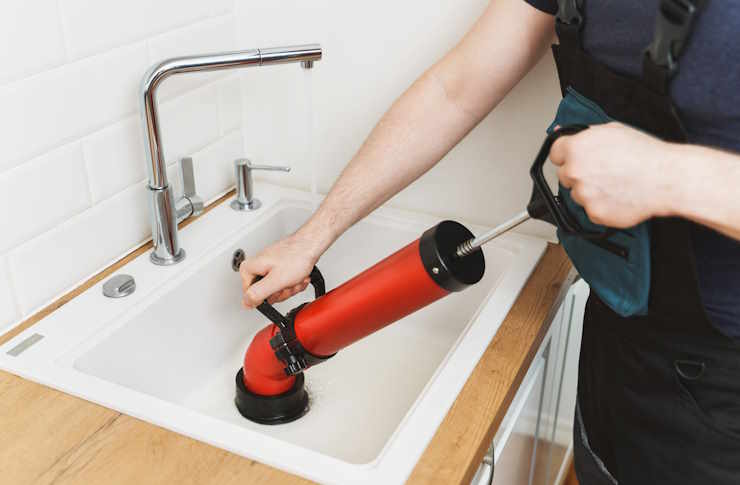Practical Guide to Cleaning Products and DIY Alternatives
Cleaning products are tools that remove dirt, stains, and microbes from surfaces, fabrics, and air. Understanding what’s in commercial cleaners and how simple homemade options work can help you choose safer, more effective solutions for routine tasks. This guide explains common ingredients, how vinegar and baking soda function, and how to mix basic natural cleaners without risking damage to surfaces.

What should I look for in cleaning products?
Choosing a cleaner means balancing effectiveness, safety, and compatibility with the surface you’re treating. Read labels for active ingredients (surfactants, acids, alkalis, oxidizers), intended uses (glass, wood, fabric, multi-surface), and safety instructions. For households with children, pets, or sensitive occupants, consider products with fewer strong fragrances or known irritants. Many commercial products are formulated to be concentrated (dilute per instructions) to reduce packaging waste and cost per use. Also check for any environmental or disposal guidance; not all chemicals are appropriate for septic systems or drains.
How does vinegar work and where is it useful?
Distilled white vinegar is about 5% acetic acid and acts as a mild acid cleaner. It dissolves some mineral deposits, neutralizes alkaline residues, and cuts through grease on many non-porous surfaces. Vinegar is commonly used for glass streak removal, kettle descaling, and removing hard water rings. Avoid using concentrated vinegar on natural stone (marble, granite) or waxed wood, as the acid can etch or strip finishes. When using vinegar, rinse surfaces afterward with water and test a small area first. Vinegar also mixes well with soap-based cleaners to reduce residue, but do not combine vinegar with bleach or hydrogen peroxide directly — those mixtures can produce irritating or hazardous gases.
Why is baking soda useful in homemade cleaners?
Baking soda (sodium bicarbonate) is a mild alkaline powder with gentle abrasive properties. It neutralizes odors, loosens light grime, and can help lift stains when combined with a small amount of water to form a paste. Baking soda is useful for scrubbing sinks, deodorizing carpets (sprinkle, wait, then vacuum), and refreshing upholstery. It’s effective on many surfaces but can be abrasive on delicate materials such as polished metals or soft plastics if scrubbed hard. Baking soda’s alkalinity also helps neutralize acids, so it pairs well with acidic cleaners like vinegar for certain tasks — used sequentially rather than mixed into a single solution for safety and effectiveness.
Can I make effective homemade cleaners?
Yes—simple homemade cleaners can handle many everyday tasks. A typical all-purpose cleaner: 1 part distilled white vinegar to 1 part water with a teaspoon of dish soap (use a mild, eco-friendly soap) is useful for counters and tiles. For glass, dilute vinegar with water (1:1) and wipe with a microfiber cloth. For grease, a paste of baking soda and water helps lift residues. Castile soap diluted in water makes a gentle detergent for floors and some fabrics. Always label homemade mixtures, store them out of reach of children and pets, and avoid mixing ingredients that create harmful reactions (for example, bleach and ammonia, or bleach and vinegar). Test homemade solutions on an inconspicuous spot before full use.
How do natural products compare to commercial cleaners?
Natural ingredients like vinegar, baking soda, and castile soap can be effective for routine cleaning and reduce exposure to certain synthetic chemicals. However, commercial cleaners often include specialized surfactants, solvents, or disinfectants designed for stubborn stains, heavy grease, or certified microbial kill claims. If you need validated disinfection (clinical settings, after illness), use products with labeled disinfectant claims and follow dwell times. For routine household maintenance, combining natural methods with targeted commercial products can offer a balance of safety, cost, and performance.
For readers interested in common brands and how they differ in practice, below is a short comparison of widely available products and typical cost ranges.
| Product/Service Name | Provider | Key Features | Cost Estimation |
|---|---|---|---|
| Distilled white vinegar | Heinz (and generic supermarket brands) | Mild acidic cleaner, deodorizes, descaling | $2–5 per liter |
| Baking soda | Arm & Hammer | Mild abrasive, deodorizer, stain lift | $1–4 per box (small) |
| Castile soap | Dr. Bronner’s | Biodegradable surfactant, multi-use | $5–12 per 16 oz |
| All-purpose cleaner | Simple Green (retail brands) | Concentrated commercial cleaner for many surfaces | $4–10 per 1 L |
| Hydrogen peroxide 3% | Pharmacy/generic brands | Oxidizing disinfectant and stain remover | $1–4 per 16 oz |
Prices, rates, or cost estimates mentioned in this article are based on the latest available information but may change over time. Independent research is advised before making financial decisions.
Conclusion
Understanding the roles and limitations of cleaning, homemade, and natural ingredients like vinegar and baking soda helps you choose appropriate products and mixes for different tasks. Use labels and tests to avoid damage, combine methods sequentially for tougher jobs, and prioritize safety when mixing or storing solutions. Whether you prefer DIY cleaners for routine upkeep or commercial products for specialized needs, informed choices provide effective cleaning while reducing unnecessary risks.






